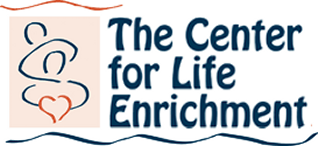By Glynis Kazanjian, Glynis@MarylandReporter.com
State Elections Administrator Linda Lamone told a seminar of state legislators and staff Thursday that any decisions to expand early voting in Maryland should be based largely on voter turnout.
“Early voting takes a lot of stress off of election day, but do you want to spend the money to have early voting when you have a very low turnout, for example in the primary elections?” Lamone said. “We should utilize our resources according to turnout.”
Lamone moderated a session on early voting at the National Conference of State Legislatures Fall Forum at the Washington Hilton Nov. 6.
Early voting turnout in primary elections has remained flat in Maryland since it was introduced in 2010. For both the 2010 and 2012 primary elections, early voting turnout among eligible voters hovered around 2.5%.
Democratic turnout doubled
In contrast, the turnout rate for eligible voters for the 2012 general election nearly doubled, growing from 6.3% in 2010 to 11.7% in 2012. Democratic turnout doubled, from 7% to 14% in 2012, and Republican turnout increased, 6.3% to 9.3%. Independent voters increased from 3.5% in 2010 to 8% in 2012.
The Maryland General Assembly is expected to take up early voting in its 2013 session. Del. Sandy Rosenberg, D-Baltimore City, has said he will sponsor legislation which would authorize the state election board to increase the number of early voting centers and extend early voting until the Sunday before Election Day. That would add three voting days to the six already allowed under current law.
Lengthy ballot questions affect long lines
Expanding the number of early voting sites, days and hours is seen by some as a solution to the long lines voters encountered in the Nov. 6 presidential election, both in Maryland and across the country. But Lamone suggested another factor may be in play.
“I think part of the cause was the length of the ballot,” Lamone told her audience. “In my home county (Anne Arundel) there were 25 ballot questions on the ballot.”
Lamone said when she was standing in a long line during early voting, she ended up addressing a sizable crowd of voters who were unclear about the ballot measures.
“That just shows the voters hadn’t focused especially on the down-ballot local questions,” Lamone explained. “Keep this in mind when factoring in considerations. It does make things more complicated. In this case it was a two-page, very long ballot.”
Panelist Michael McDonald, a professor at George Mason University, Va., said lengthy ballots could also be seen as an attempt to suppress voters.
“A cynic might even say that if you wish to depress turnout by creating long lines you would create a long ballot by putting multiple versions of the same referendum on the ballot, as happened in Florida,” McDonald said.
Democrats benefited from early voting
McDonald said early voting patterns confirmed polling numbers that suggested Obama would win the election. Approximately 130 million people voted in the 2012 presidential election. Nationally, 34% voted early, much higher than the Maryland rate.
Preliminary studies from the election showed that provisional ballots and early in-person voting broke heavily for Democrats, he said. Mail ballots broke for Republicans. One million votes were rejected, many of which he said were provisional.
At least 12 states beat their 2008 records for early voting: Arizona, Iowa, Louisiana, Maryland, Montana, Nevada, New Jersey, North Carolina, North Dakota, Ohio, Oklahoma and Rhode Island, McDonald reported.
New Jersey Senate President Stephen Sweeney, D, used most of his presentation time taking jabs at New Jersey’s decision to allow residents affected by Hurricane Sandy to vote by email.
“The email voting was a disaster,” Sweeney said. “If we wanted anything for anybody in this room, [it] is everyone should have an emergency plan for elections. New Jersey showed how vulnerable a state can be when an election comes . . . when you don’t plan and you don’t have a focus on what to do. There was a lot of fraud. Honestly, there were a lot of ballots that didn’t match up. It was a screw-up you could not believe.”
At the end of the session, Lamone said she had heard through media reports a congressional bill was in the works to mandate the number of voting units and poll workers at every polling location in an effort to shorten lines.


